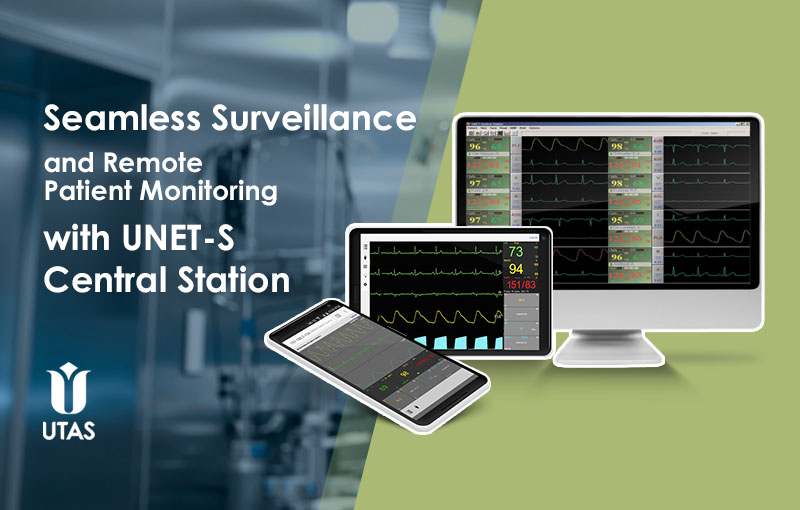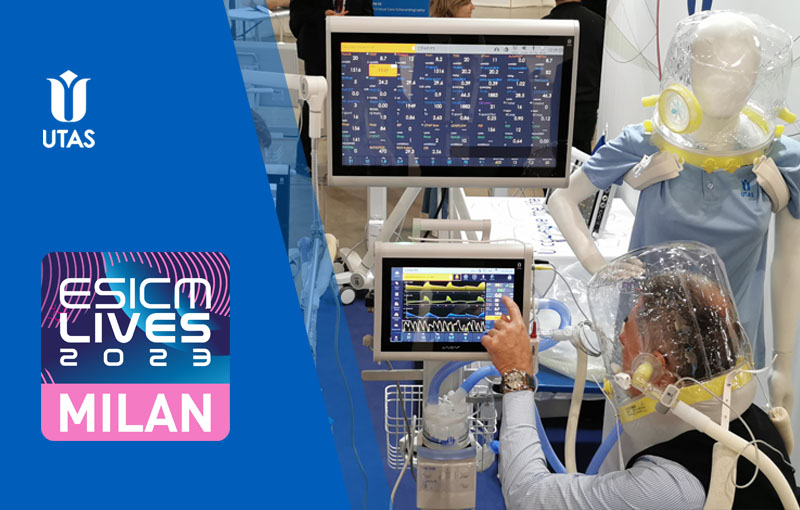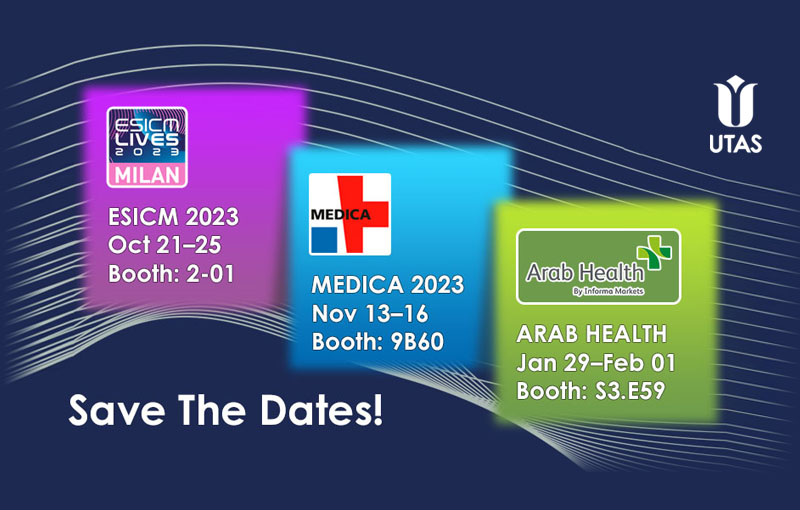
How to stay informed about patient’s status and view all data in the most appropriate way? (VIDEO)
Central monitoring station in a hospital is essential for real-time surveillance, early detection of patient issues, and workflow improvements, all of which contribute to enhanced patient care and safety.
UTAS has developed its UNET-S Central Station for seamless monitoring as a complete cycle of recording, transmission, and data visualization, from the point of care to patient discharge. UNET-S Central Station consolidates the monitoring information and provides a quick overview or remote view of the patient’s status.
UNET-S Central Station integrates up to 32 UM 300-S patient monitors in a wireless or wired connection.
• All parameters are being displayed in real-time mode.
• Provides simple patient database maintenance
• Events and alarms are recorded automatically.
• Full disclosure – up to 72 hours.
• Trends recording – up to 720 hours.
• Easy integration and secure data transfer into Electronic Health Records (via HL7).
Continuous patient monitoring
To keep a constant watch on patients’ vital signs, such as HR, BP, RR, SpO2, and ECG hospitals use a central monitoring station. This allows healthcare providers to detect any abnormalities or signs of deterioration promptly.
Also central monitoring stations incorporate early warning systems that can alert healthcare professionals to potential issues before they become critical. This early detection can lead to faster interventions and improved patient outcomes. This is even more possible since UM 300-S patient monitor provide multi-level alarm system for every monitoring channel.
In intensive care units (ICUs) and critical care units (CCUs), a central monitoring station is essential for monitoring multiple patients simultaneously. Even one nurse can monitor the statuses of all patients in the unit at once at her post, equipped with a central station. This ensures that healthcare providers can optimize workflow and respond quickly to changes in patients’ conditions.
Vital data records at all stages of treatment in one place
Monitors united in a medical network by UNET-S Central Station constantly records received data. If any patient monitor is temporarily disconnected from the clinic network, you always have access to cached data.
Gap-free patient data flow
Continuous gap-free monitoring provides a single data flow due to the integration of monitoring data and networked clinical information.

View all patient data in the most appropriate way
Doctors from different departments can get access to necessary information in a convenient form. Whether quick access on a smartphone, detailed analysis on a computer, or printed docs.
Remote patient monitoring
And the last but not least: with advancements in technology, central monitoring stations can enable remote patient surveillance. This is particularly valuable for monitoring patients in isolation rooms, reducing the risk of exposure to infectious diseases, and reducing alarm fatigue among medical staff.
With UNET-S Central station it is possible to receive and view patient data (real-time numerical data, waveforms, alarms) on smartphone via UniViewer technology.
Efficiency of the UniViewer remote monitoring
• Data visualization on tablet and smartphone via any browser
• Can reduce viral loads and infection risk for caregivers
• Saves time and increases monitoring by qualified medical personnel in the ICU
• Remote consultation with colleagues
• Reduces alarm fatigue via a notification system found on smartphones
• Efficient design and easy to sanitize (an important factor in the fight against nosocomial infections)
• User authorization and data security.

Integration with EHR or HIS
Also modern central monitoring systems can integrate with a hospital’s electronic health records. This integration ensures that patient data from monitoring devices is seamlessly incorporated into the patient’s overall medical record, providing a comprehensive view of their health status.
UNET-S central station provides simple integration with Hospital Information System (HIS) and can quickly and securely (due to HL7 protocol) transfer data to the Electronic Health Records (EHR).
Connecting to the HIS allows clinicians to optimize workflows in the clinic, create a gap-free dataflow, and improve the patients’ database management.
PDF report directly from patient monitor
But this is not all in improving the workflow in the clinic. With UM 300-S clinicians can generate report right from the monitor you need and save to USB drive or print on connected (wired\wireless) printer.
• Convenient for detailed analysis.
• Document flow optimization.
• Saving reliable patient monitoring data.
• Integration into the hospital workflow.
• Easy data transfer for consultations or to the patient’s medical records.
In summary, a central monitoring station in a hospital is crucial for several reasons, primarily centered around patient care, safety, and operational efficiency. It is essential for creating a complete cycle of recording, transmitting, and visualizing patient data in a convenient format. Moreover, it plays a key role in centralizing information for effective and seamless surveillance, integration with EHR / HIS, remote monitoring of patient status, and general improving clinical workflow.



